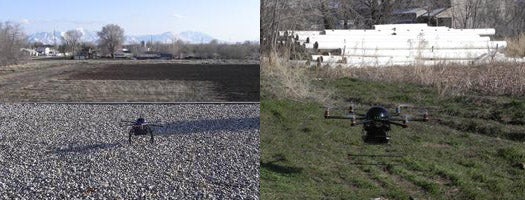A Hexacopter That Sees Motion and Hears Breathing, Even Through Walls
About a month ago we wrote about robot maker TiaLinx Inc.’s Cougar20-H robot, a rolling ground-based ‘bot with sensors so...

About a month ago we wrote about robot maker TiaLinx Inc.’s Cougar20-H robot, a rolling ground-based ‘bot with sensors so acute it can detect a person breathing through a concrete wall. But, as we (and others) pointed out at the time, the limited mobility of a terrestrial robot limited the Cougar’s applications. Problem solved: TiaLinx this week debuted its Phoenix40-A, an unmanned hexacopter that can sense breathing and motion in buildings on the ground below.
The remote-controlled mini-copter can travel long distances while carrying out a variety of surveillance tasks, including recording video in both day and night-vision formats. But its ability to see through reinforced concrete walls with a narrow-beam of multi-gigahertz radio waves in real time is what should have the hunted–whoever they may be–shaking in their bunkers.
The Phoenix40-A can land on top of a building and scan it for a human presence, or it can do so on the fly. It can also generate the layout of a multi-story building, relaying the information back to law enforcement or troops before they proceed into a structure. The little bot can even help locate land mines, be they hostile or simply leftover unexploded ordnance from some past conflict.
But though the U.S. Army contributed to its development, it’s not all tactical tasks and military surveillance for the little Phoenix40-A. A fast, nimble hexacopter that doesn’t need to touch down for extended periods could be a critical tool during search and rescue operations after disasters like the recent earthquake and tsunami in Japan. The bot could travel over large swaths of impassable territory to search for signs of life, helping lead rescuers directly to those in need of aid when the clock is ticking.